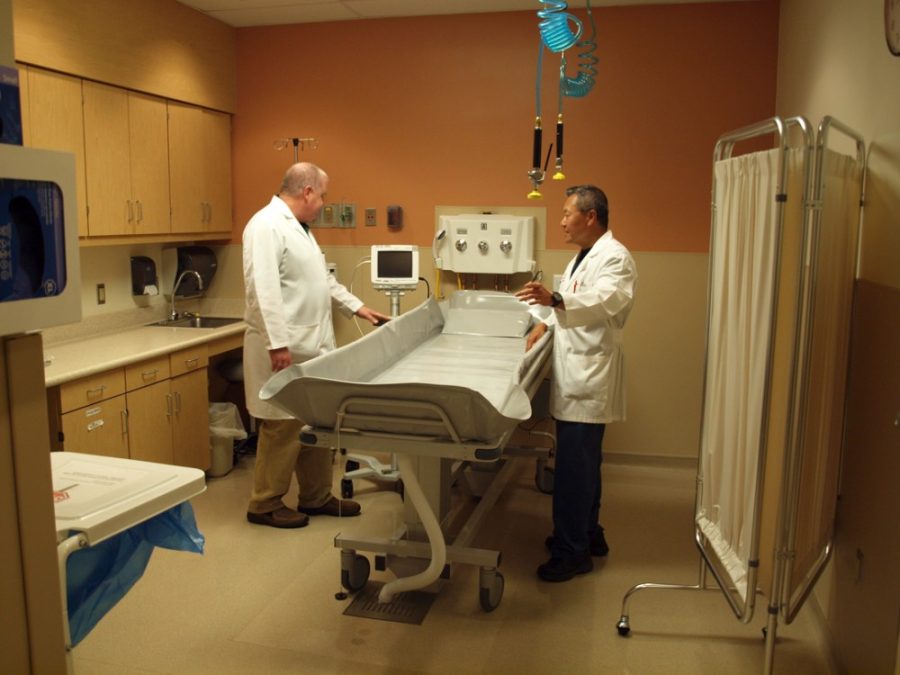After the elimination of the St. Mary’s Hospital Burn Program in 2008, the availability of immediate treatment for moderate to severe burns in Southern Arizona has been almost nonexistent. The University of Arizona Medical Center has since recognized the need for burn treatment in the region and began developing a Burn Care Program of its own in 2012, including an advanced hydrotherapy room which opened in December.
“Between 2008 and 2012, about 95 percent of burn patients were going to Maricopa Burn Center in Phoenix,” said Dr. Gary Vercruysse, associate professor of surgery and director of Burn Services at UAMC.
At $14,000 for a helicopter ride, transporting burn victims from Southern Arizona to Phoenix is a financial burden that can also have a psychological effect on patients and families, Vercruysse explained.
“Being burned is a scary thing, and having your family available to visit and talk with you — talk about your fears, talk about your pain and talk about getting better — makes a big impact on your recovery from a psychological standpoint,” Vercruysse said.
The development of the new UAMC Burn Care Program began under Dr. Peter Rhee, professor of surgery and chief of Trauma, Critical Care, Burn and Emergency Surgery. Rhee explained that the number of burn patients treated by the UAMC has grown exponentially since 2012. The burn clinic currently treats about 1,000 burn patients every year, Vercruysee said, and has transferred only two patients to Phoenix since the start of the new program.
“The UAMC Burn Care Unit is not only a safe facility, but a state-of-the-art facility,” Rhee said.
The new burn facility maximizes patient care through advanced medical equipment, a high nursing ratio and devices designed for burn treatment, Vercruysse explained. The burn facility, he said, has ICU beds specialized for monitoring patient vital signs, a nurse ratio of 2-to-1 or 1-to-1 depending on patient stability, and the newly opened hydrotherapy room.
The hydrotherapy room is an advanced water-resistant burn treatment area that utilizes warm water to clean away dead skin and bacteria to prevent infections and encourage healing. The ceiling tiles of the “hydro-room” contain heaters that radiate warmth to burn victims, ensuring that patients maintain a stable body temperature during therapy.
Rhee said he views the contribution of the Burn Care Program at UAMC to Southern Arizona as a much-needed service.
“Tucson is a city of a million people,” Rhee said. “It’s not a little town. For them not to have a burn center here is just unfathomable to me.”
The primary complication for the addition of a burn center to any Southern Arizona hospital is the risk of financial loss.
Hospitals around Southern Arizona have been unwilling to confront the risks of building a burn center despite the community need for one. This hesitation is not only because of the potential financial repercussions but also because of the rarity of burn specialists like Vercruysse, Rhee explained.
“A lot of the reasoning behind other hospitals not wanting to take on that challenge is because they’re fearful of losing money,” Rhee said. “We’ve been able to remove that from the equation and just concentrate on the population’s needs and what the people in town here need.”
_______________
Follow Jacob Witt on Twitter.









